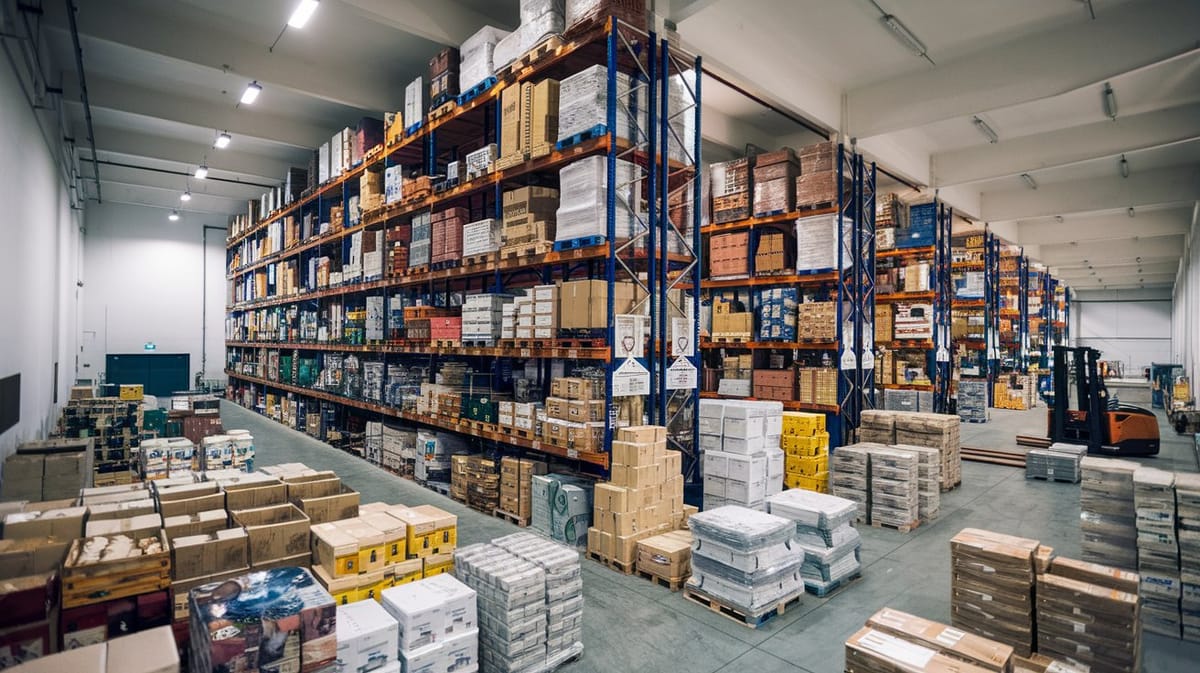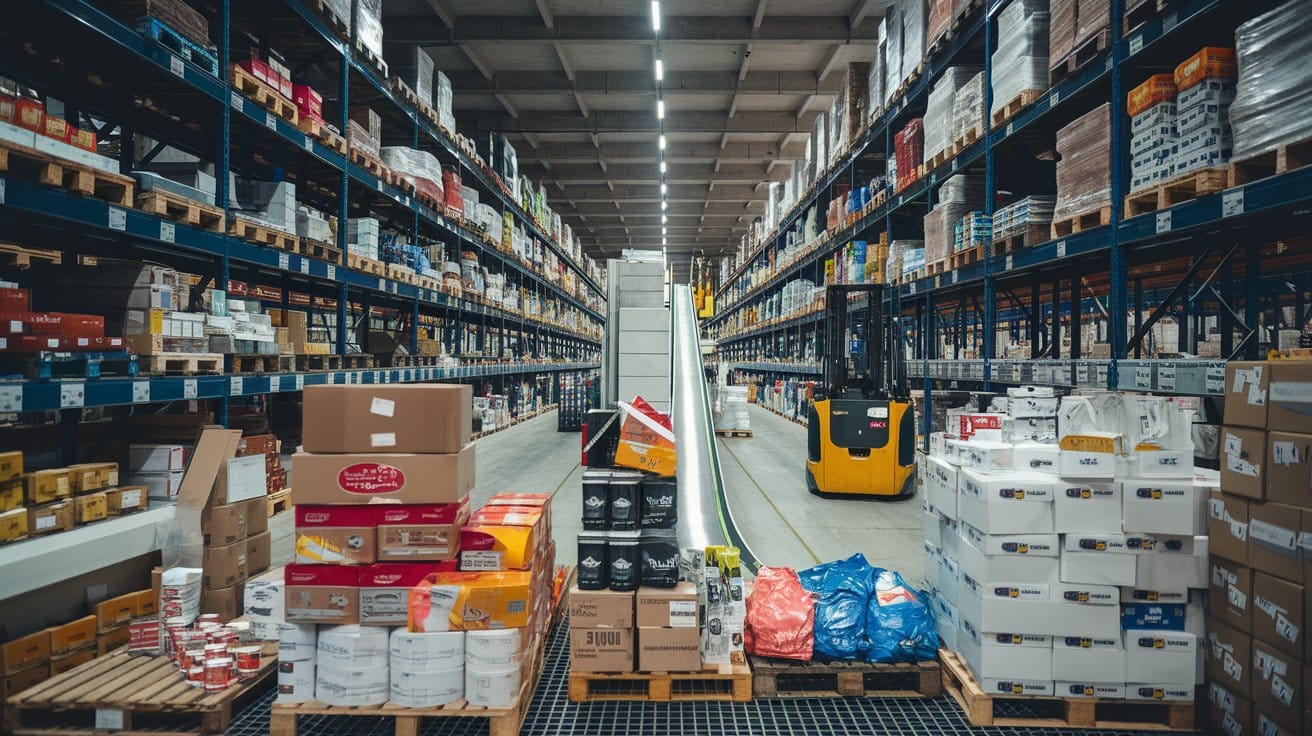FBA Storage Limit: What It Is and How It Works

Imagine you're a small business owner in Singapore, eager to sell more on Amazon. You've heard about Fulfillment by Amazon (FBA) and how it can help. But, you're confused about FBA storage limit. You're not alone in this confusion.
Many sellers struggle to understand FBA storage limits and how they affect their business. With 86% of third-party sellers using FBA, knowing about amazon fba inventory storage limits is key. Let's explore how fba inventory management can impact your Amazon success.
Amazon recently changed from weekly to monthly restock limits. This change, starting March 1st, 2023, gives sellers more control over their stock. But, what does this mean for you? How can you navigate these changes and keep your business thriving?
We'll dive into the details of FBA storage limits. We'll see how it works, its effects on sellers, and how to manage your inventory better. Whether you're experienced or new to Amazon, knowing these limits is essential for success.
Key Takeaways
- FBA storage limits are monthly capacity limits for inventory at Amazon fulfillment centers
- The new system replaced weekly restock limits with a single monthly capacity limit
- Capacity limits are set during the third week of each month
- Sellers can plan up to three months in advance with estimated capacity limits
- Each storage type (standard size, oversize, etc.) has its own capacity limits
- Understanding FBA storage limits is crucial for effective inventory management
Introduction to Amazon FBA Capacity Limits
Amazon's Fulfillment by Amazon (FBA) program has seen big changes lately. The company has updated its warehouse space rules to help sellers manage their stock better. These changes aim to use space more efficiently and make the platform work better.
Recent Changes in FBA Storage Policies
In March 2023, Amazon made a big change to its FBA storage rules. They replaced the old Storage Volume Limit and Restock Limit with a single Capacity Limit. This change affects how sellers handle their stock and deal with warehouse space rules.
Transition from Restock Limits to Capacity Limits
The move from weekly restock limits to monthly capacity limits is a big change for sellers. This new system gives a clearer view of how inventory is spread out. The Capacity Limit changes every month, giving sellers more room to manage their stock.
Impact on Amazon Sellers
The new FBA Capacity Management System has big effects on sellers in Singapore. Professional sellers with over 39 weeks of activity get capacity limits based on their Inventory Performance Index (IPI) score and sales. Sellers with higher scores get more limits, encouraging them to manage their stock well.
| Account Type | Capacity Limit | IPI Score Impact |
|---|---|---|
| New Professional | Unlimited for 39 weeks | No impact initially |
| Established Professional | Based on performance | Higher score = Higher limit |
| Individual | Fixed at 15 cubic feet | No impact |
Sellers can now bid for extra space up to 20% or 2,000 cubic feet with the Capacity Manager tool. This system rewards efficient sellers by possibly covering reservation fees with sales performance credits. The new FBA capacity limits give clear rules, helping sellers to manage their stock better and keep up with Amazon's changing rules.
What is FBA Storage Limit
FBA storage limit is the max amount of inventory an Amazon seller can store with Fulfillment by Amazon. It's key for managing fba inventory and affects how much you can sell. The space is measured in cubic feet, found by multiplying the item's length, width, and height in inches, then dividing by 1,728.
Individual Selling Accounts can hold up to 15 cubic feet. Professional Accounts have limits that change based on several things. The FBA dashboard's Capacity Monitor shows how much space you're using for different types of items.
- Standard-size
- Oversize
- Extra-large
- Apparel
- Footwear
- Aerosol
- Flammable inventory

In February 2022, Amazon set new limits on how much you can restock. Professional sellers might get to restock more based on how well they do. Your Inventory Performance Index (IPI) score helps decide these limits.
"Keeping your inventory balanced is key to avoid long-term storage fees. Amazon charges extra if your items stay in their centers for over a year."
Knowing about FBA storage limits helps plan shipments better and manage your inventory well. You can ask for more space by paying a fee. This fee might be covered by credits you earn from selling more with the extra space.
| Seller Type | Storage Limit | Restock Limit (Standard-size) | Restock Limit (Oversized) |
|---|---|---|---|
| Individual | 15 cubic feet | 500 units | 100 units |
| Professional | Variable | Based on performance | Based on performance |
Understanding the New FBA Capacity Management System
Amazon has made big changes to how it handles FBA inventory. Starting in March 2023, it moved from weekly limits to monthly limits. This change gives sellers more freedom and control over their stock.
Monthly Capacity Limits Explained
The new system looks at inventory in two ways: units and cubic feet. Sellers get monthly limits for each type of storage. This makes it easier to plan for the long term by focusing on volume, not just numbers.
Capacity Forecasting for Sellers
Sellers can now predict their capacity up to three months ahead. This helps them prepare for busy seasons and sales trends. Keeping an Inventory Performance Index (IPI) score above 350 lets sellers use more FBA space and avoid limits.
Storage Types and Their Individual Limits
Each storage type has its own limits. These include standard, oversized, apparel, footwear, and extra-large items. Sellers can check their current and future limits through the Capacity Monitor in Seller Central.
| Storage Type | Capacity Measurement | Limit Frequency |
|---|---|---|
| Standard-size | Cubic feet | Monthly |
| Oversized | Cubic feet | Monthly |
| Apparel | Units | Monthly |
| Footwear | Units | Monthly |
| Extra-large | Cubic feet | Monthly |
This new system helps sellers manage their FBA inventory better. By understanding and using these changes, sellers can make their storage more efficient. This could also help them save money on inventory they don't need.
Factors Influencing FBA Capacity Limits
Amazon's FBA capacity limits are influenced by several key factors. The Inventory Performance Index (IPI) score is a big player. Sellers with better IPI scores get more room to grow, showing Amazon values their efficient inventory management.
Sales performance also matters a lot. Sellers who sell a lot and have good forecasts get more space. This is because Amazon wants to meet customer demand. Plus, sales go up during holidays and other busy times, so Amazon adjusts limits accordingly.

The number of fulfillment centers Amazon has affects storage limits. As Amazon grows, so does the storage space available to sellers. New sellers get a break for 39 weeks without limits, helping them get established and show what they need.
| Factor | Impact on FBA Capacity Limits |
|---|---|
| IPI Score | Higher score = Increased limits |
| Sales Performance | Strong sales = Higher capacity |
| Seasonal Trends | Temporary increases during peak periods |
| Fulfillment Center Capacity | Network expansion may increase limits |
Knowing these factors helps sellers improve their FBA game. By working on their IPI scores and sales, they can get more space. This leads to more success on Amazon.
The Role of Inventory Performance Index (IPI) in Storage Limits
The Inventory Performance Index (IPI) is key in setting FBA capacity limits. It scores from 0 to 1,000, showing how well sellers manage their Amazon inventory. A score above 400 helps avoid storage limits and amazon fba storage fees.
Key Components of IPI Score
The IPI score looks at several things:
- Excess inventory: Keeping stock levels below a 90-day supply
- Sell-through rate: Units sold and shipped divided by average units on hand over 90 days
- In-stock rate: Ensuring popular items remain available
- Stranded inventory: Resolving listing issues promptly
Strategies to Improve Your IPI Score
To raise your IPI score and dodge long-term storage fees, try these:
- Maintain a healthy 90-day rolling sell-through rate
- Keep 30-60 days' worth of inventory supply
- Monitor and resolve stranded inventory issues
- Use removal orders or liquidations for overstocked items
- Exclude non-replenishable products from IPI calculations
Impact of IPI on Storage Capacity
A better IPI score means more storage space. Sellers with scores over 400 get more room and often pay less than 1% in storage fees. Those under it face limits on new inventory and may pay extra for excess.
"Proper inventory management is vital for success and profitability on Amazon."
By working on these areas, sellers can up their IPI scores. This improves storage capacity and boosts their Amazon FBA performance.
Navigating the FBA Capacity Manager
The FBA Capacity Manager is a game-changer for sellers in Singapore. It helps optimize FBA storage space and makes FBA inventory management easier. Sellers can now track their storage capacity and see a summary of their FBA business.
Amazon's new system measures inventory in cubic feet, giving a more accurate estimate of needed capacity. Sellers get allocations for the next three months based on sales and past performance. The capacity limit is available in the third full week of each month, giving sellers more time for planning.
The Capacity Manager shows a graph of inventory on hand in volume and units, plus the maximum allowed shipment. Sellers can ask for up to 20% more capacity or 2,000 cubic feet, whichever is greater. This flexibility helps manage inventory better during peak seasons.
A key feature is the performance credit system. Sellers earn $0.15 for every dollar of sales from extra space, offsetting reservation fees. This encourages efficient use of storage and boosts sales. By mastering the FBA Capacity Manager, sellers can make informed decisions, optimize their FBA storage space, and grow their Amazon business.
Frequently Asked Questions
Q: What is FBA storage limit and how does it work?
A: FBA storage limit is a restriction Amazon places on how much inventory you can store at their fulfillment centers. It works by setting capacity limits based on various factors, including your sales history, inventory performance, and seasonality. These limits determine how much inventory you can send to Amazon's warehouses and help manage storage space efficiently.
Q: How are FBA storage fees calculated?
A: FBA storage fees are calculated based on the amount of space your inventory occupies in Amazon's fulfillment centers. Fees vary depending on the time of year and the size of your items. Amazon charges monthly storage fees, which are higher during peak seasons. Additionally, there may be long-term storage fees for items stored for more than 365 days.
Q: What are FBA restock limits and how do they differ from storage limits?
A: FBA restock limits and storage limits are two different inventory restrictions. Restock limits control how much inventory you can send to Amazon's fulfillment centers, while storage limits determine the total amount of inventory you can store at Amazon. Both limits consider factors like your sales history and inventory performance, but they serve different purposes in managing your FBA inventory.
Q: How does Amazon determine my inventory capacity?
A: Amazon determines your inventory capacity based on several factors, including your sales history, inventory performance, and the Amazon IPI (Inventory Performance Index) score. Higher sales volumes, better inventory turnover, and a higher IPI score can lead to increased storage limits. Amazon regularly reviews and adjusts these limits for FBA sellers.
Q: What are overage fees and when do they apply?
A: Overage fees are charges applied when your on-hand inventory exceeds your storage limits. These fees are calculated based on the amount of inventory that exceeds your limit and are in addition to regular storage fees. To avoid overage fees, it's crucial to monitor your inventory levels and stay within your allocated storage capacity.
Q: How can I request additional capacity for my FBA inventory?
A: You can request additional capacity through your FBA dashboard in Amazon Seller Central. Amazon may grant additional capacity based on a reservation fee per cubic foot. The highest reservation fee per cubic foot is more likely to be approved. Keep in mind that additional capacity is not guaranteed and depends on various factors, including available space in fulfillment centers.
Q: How do quarterly storage volume limits work?
A: Quarterly storage volume limits set restrictions on the amount of inventory you can store at Amazon for the next three months. These limits are based on your sales history, inventory performance, and seasonality. Amazon provides estimated limits for the upcoming quarter, allowing you to plan your inventory accordingly. It's important to monitor these limits and adjust your inventory strategy as needed.
Q: How does the Amazon IPI score affect FBA storage limits?
A: Your Amazon IPI (Inventory Performance Index) score plays a crucial role in determining your FBA storage limits. A higher IPI score can lead to higher capacity limits, giving you more flexibility in managing your inventory. Amazon calculates this score based on factors like sell-through rate, excess inventory, and stranded inventory. Maintaining a good IPI score is essential for maximizing your storage capacity.
Frustrated by Amazon FBA Storage Limits?
Join our mini-course at WAH Academy and learn how to manage your inventory, avoid surprise fees, and stay in control.
No confusion. Just smart, step-by-step advice.
Tap below to start learning.



